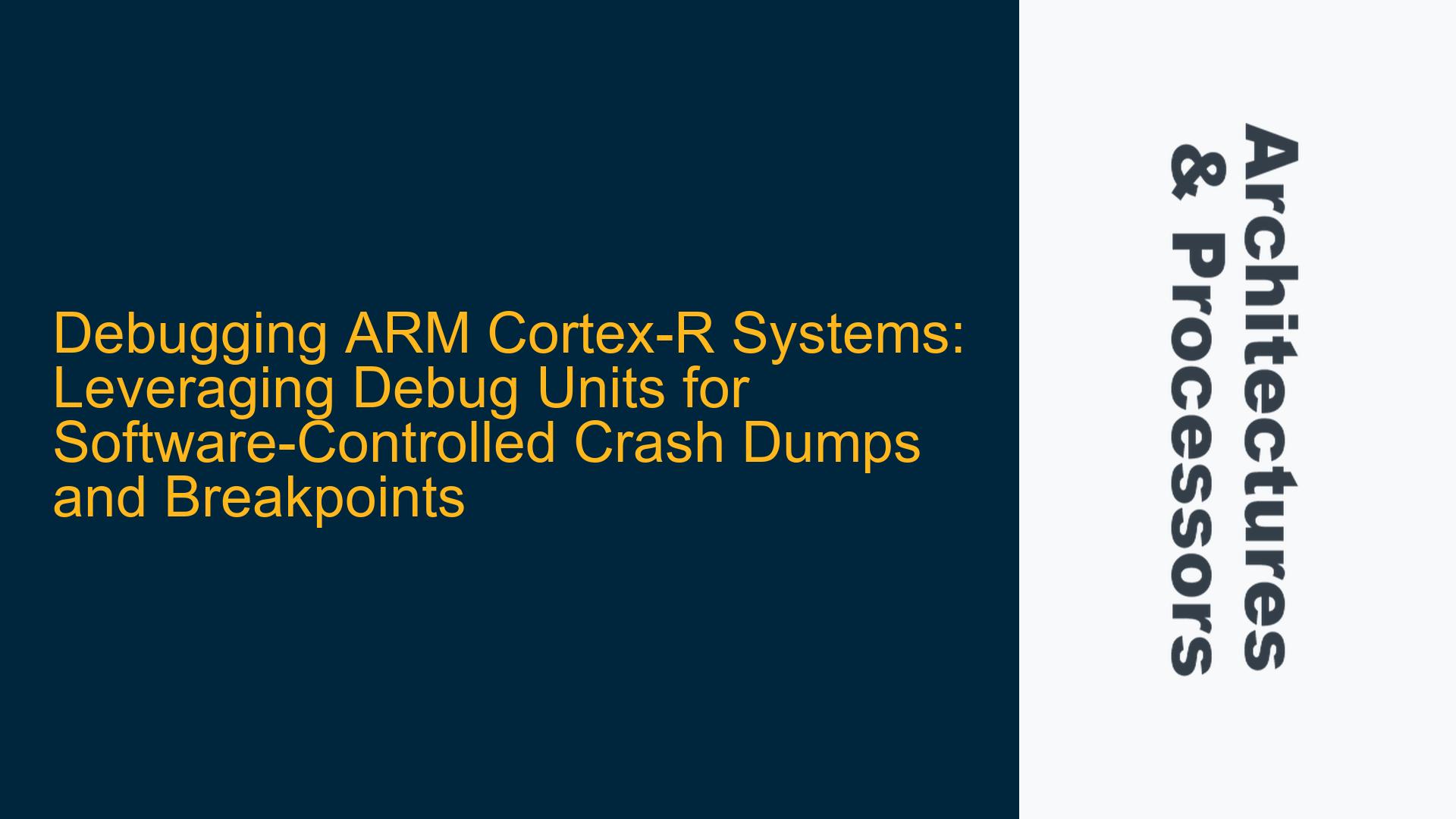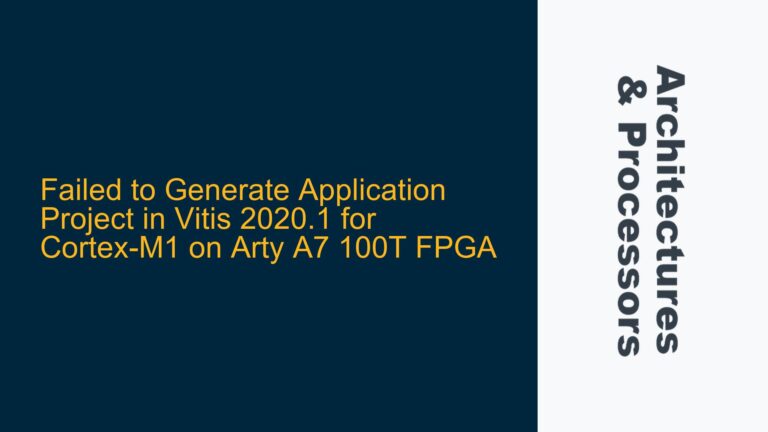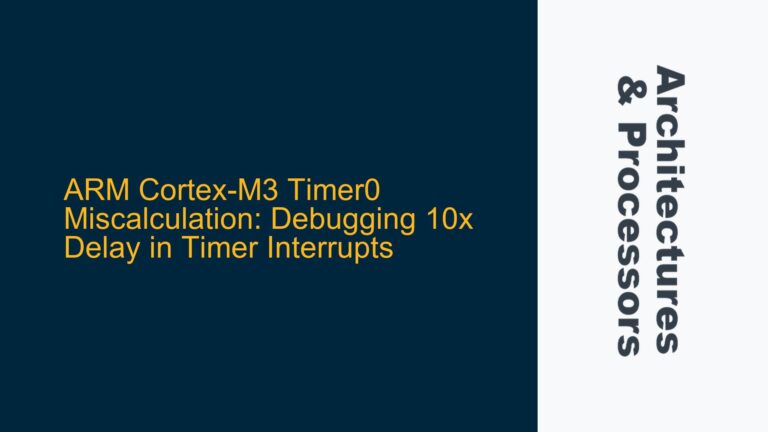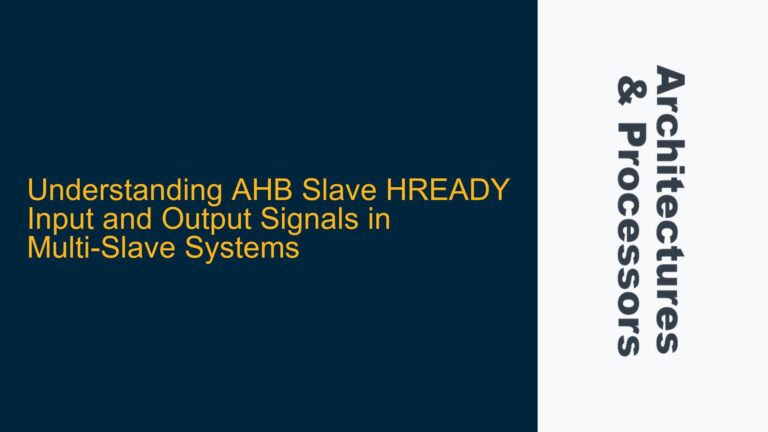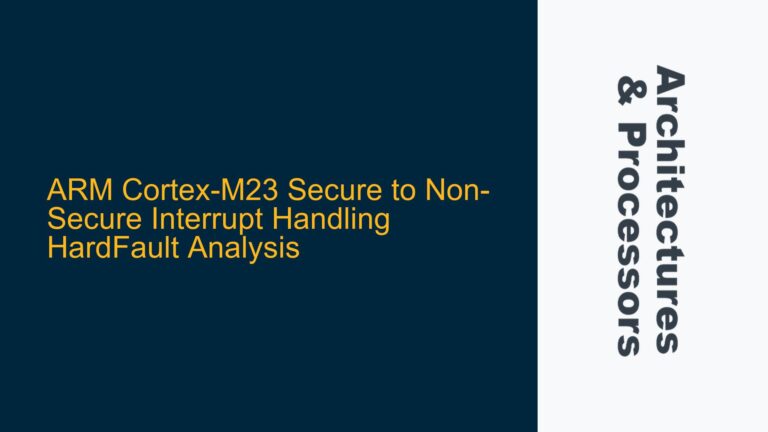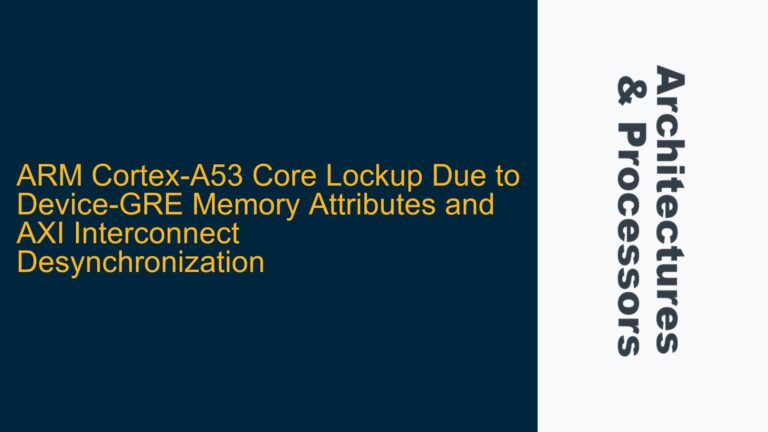Dynamic Configuration of Watchpoints and Breakpoints in ARM Cortex-R Debug Units
The ARM Cortex-R series processors are designed for real-time and safety-critical applications, where debugging capabilities are crucial for ensuring system reliability. One of the key features of the Cortex-R debug unit is its ability to dynamically configure watchpoints and breakpoints during runtime. This capability allows developers to monitor specific memory locations or instruction addresses without halting the system, which is particularly useful in real-time environments where system availability is critical.
Watchpoints and breakpoints can be set by either software running on the target system or through an external debugger such as ARM DS-5. The debug unit provides registers that can be programmed to define the address, data value, and control conditions for triggering these points. For instance, a watchpoint can be set to trigger when a specific memory location is written to with a particular value, while a breakpoint can be set to halt execution when a specific instruction is reached.
The dynamic nature of these configurations means that they can be modified on-the-fly based on the system’s state or the debugging requirements. This is particularly useful in scenarios where the system’s behavior changes over time, and the debugging strategy needs to adapt accordingly. For example, in a multi-threaded environment, breakpoints can be dynamically set and cleared to monitor specific threads without affecting the overall system performance.
Debug Unit Modes: Halt Mode vs. Monitor Mode and Exception Handling
The ARM Cortex-R debug unit operates in two primary modes: Halt Mode and Monitor Mode. Understanding the differences between these modes is crucial for effectively utilizing the debug unit in various scenarios.
In Halt Mode, the processor stops execution entirely when a breakpoint is hit, allowing an external debugger to take control of the system. This mode is typically used during development and testing phases, where the developer has direct access to the hardware and can interact with the system through a debugger interface. When a breakpoint is triggered in Halt Mode, the processor enters a debug state, and the external debugger can inspect and modify the system’s registers, memory, and other states.
Monitor Mode, on the other hand, is designed for scenarios where an external debugger is not available or practical, such as in deployed systems. In this mode, when a breakpoint is hit, the debug unit generates a debug exception instead of halting the processor. This exception can be handled by a software debug agent running on the target system, which can then perform actions such as logging the system state, generating a crash dump, or even modifying the system’s behavior in response to the breakpoint.
The choice between Halt Mode and Monitor Mode depends on the specific requirements of the application. For example, in a safety-critical system where continuous operation is essential, Monitor Mode may be preferred to avoid halting the system. In contrast, during the development phase, Halt Mode provides more control and visibility into the system’s state, making it easier to identify and fix issues.
Implementing a Software Debug Agent for ARM Cortex-R Systems
Implementing a software debug agent for ARM Cortex-R systems involves several key steps, including setting up the debug exception handler, configuring the debug unit, and managing the interaction between the debug agent and the rest of the system.
The first step in implementing a debug agent is to set up the debug exception handler. This handler is responsible for responding to debug exceptions generated by the debug unit when a breakpoint or watchpoint is triggered in Monitor Mode. The handler must be carefully designed to ensure that it can quickly and efficiently capture the system’s state without introducing significant overhead or disrupting the system’s real-time performance.
Once the debug exception handler is in place, the next step is to configure the debug unit to operate in Monitor Mode and set up the necessary breakpoints and watchpoints. This involves programming the debug unit’s registers to define the conditions under which the breakpoints and watchpoints should trigger. For example, a breakpoint can be set to trigger when a specific instruction is executed, while a watchpoint can be set to trigger when a specific memory location is accessed.
The debug agent must also be able to dynamically modify these configurations based on the system’s state or the debugging requirements. This may involve enabling or disabling breakpoints and watchpoints, changing their trigger conditions, or even adding new ones as needed. The ability to dynamically reconfigure the debug unit is particularly important in complex systems where the debugging requirements may change over time.
Finally, the debug agent must be integrated with the rest of the system to ensure that it can effectively capture and log the system’s state when a breakpoint or watchpoint is triggered. This may involve interacting with other system components, such as the operating system, file system, or communication interfaces, to store the captured data or transmit it to a remote system for analysis.
In conclusion, the ARM Cortex-R debug unit provides powerful capabilities for debugging real-time and safety-critical systems. By understanding and effectively utilizing these capabilities, developers can implement robust debugging strategies that ensure the reliability and performance of their systems. Whether using Halt Mode for development and testing or Monitor Mode for deployed systems, the debug unit offers the flexibility and control needed to address a wide range of debugging challenges.
